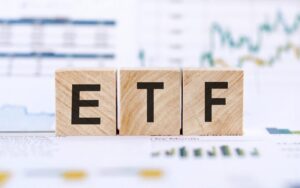Trading Czech commodity CFDs: Advanced strategies
4 min read
Trading Czech commodity CFDs (Contracts for Difference) provides a unique opportunity for investors to gain exposure to a wide range of commodities, from energy products to agricultural goods, without needing physical ownership. However, navigating the complexities of commodity markets requires a sophisticated approach.
This article will explore advanced strategies for trading Czech commodity CFDs, offering insights into how traders can effectively analyse and capitalise on price movements in these dynamic markets. Learn more about CFD trading at Saxo.
Understanding Czech commodity CFDs
Czech commodity CFDs are derivative instruments that track the price movements of various commodities, such as oil, natural gas, gold, and agricultural products. Unlike traditional futures contracts, CFDs do not involve the physical delivery of the underlying asset. Instead, they enable traders to speculate on price fluctuations, potentially profiting from rising and falling commodity prices.
To trade Czech commodity CFDs successfully, it’s crucial to have a comprehensive understanding of the specific commodities being traded, including their supply and demand dynamics, geopolitical influences, and seasonal patterns. Traders should stay attuned to global economic conditions, as inflation rates, interest rates, and currency movements can significantly impact commodity prices.
Trend-following strategies
Trend-following strategies are a popular approach in commodity CFD trading. These strategies aim to capitalise on established price trends, whether upward or downward. Traders employing trend-following techniques typically use technical indicators and chart patterns to identify and confirm the direction of the prevailing trend.
In a bullish trend, traders might look for indicators signalling an upward price movement, such as moving averages or breakout patterns. Conversely, they would seek signs of a downward movement in a bearish trend. Traders need to employ risk management measures, such as setting stop-loss orders, to protect against potential reversals in the trend. Using multiple timeframes for analysis can help confirm the strength and sustainability of a trend, enhancing the effectiveness of trend-following strategies.
Mean reversion strategies
Mean reversion strategies operate on the premise that prices tend to revert to their historical averages over time. When a commodity’s price moves significantly from its average, traders employing mean reversion strategies anticipate a return to the mean.
To implement this strategy, traders use technical indicators like the Relative Strength Index (RSI) or Bollinger Bands to identify overbought or oversold conditions. When a commodity’s price reaches an extreme, traders may take a contrarian position, expecting a reversal. However, it’s essential to exercise caution, as mean reversion strategies can be vulnerable to prolonged trends or sudden, unexpected market movements.
Spread trading and arbitrage
Spread trading involves simultaneous positions in two or more related commodities or contracts. Traders seek to profit from the price differentials or spreads between these assets. For example, in inter-commodity spreads, traders may go long on one commodity and short on another, anticipating a convergence or divergence in their prices.
Arbitrage strategies, on the other hand, aim to capitalise on price discrepancies between related markets or exchanges. This can involve simultaneous buying and selling of the same commodity in different markets to lock in a profit. While spread trading and arbitrage can be complex and require precise execution, they offer opportunities for traders to capture risk-free or near-risk-free profits in Czech commodity CFDs.
Fundamental analysis in commodity CFD trading
Fundamental analysis is crucial in evaluating the underlying factors that influence commodity prices. This approach involves examining supply and demand dynamics, geopolitical events, weather patterns, and government policies that impact the production and consumption of commodities.
Traders employing fundamental analysis must stay informed about global economic conditions, such as GDP growth rates, inflation rates, and trade balances, as these factors can significantly impact commodity markets. Additionally, geopolitical events, such as conflicts or trade disputes, can cause sudden shifts in commodity prices. By integrating fundamental analysis with technical indicators, traders can better understand the forces driving commodity price movements.
Risk management and diversification in commodity CFD trading
Given the inherent volatility of commodity markets, effective risk management is paramount in trading commodity CFDs. Traders should establish clear guidelines for position sizing, set stop-loss levels, and diversify their exposure across different commodities. Diversification helps spread risk and can cushion against losses in specific commodities.
Traders should consider incorporating dynamic risk management techniques that adapt to changing market conditions. For example, adjusting position sizes based on volatility levels or implementing trailing stops can help optimise risk-reward ratios.
Traders must stay well-informed about global economic events, policy decisions, and geopolitical developments that can impact commodity prices. Unexpected events, such as natural disasters or political unrest, can lead to sudden and significant price movements.
At the end of the day
Trading Czech commodity CFDs offers diverse opportunities for investors to participate in the global commodities market. By employing sophisticated strategies, such as trend-following, mean reversion, spread trading, and fundamental analysis, traders can confidently navigate the complexities of commodity markets.
It’s essential to approach commodity CFD trading with a disciplined and informed mindset and to implement robust risk management practices. With a strategic approach and a deep understanding of commodity markets, traders can position themselves for success in this dynamic and potentially rewarding sector.







